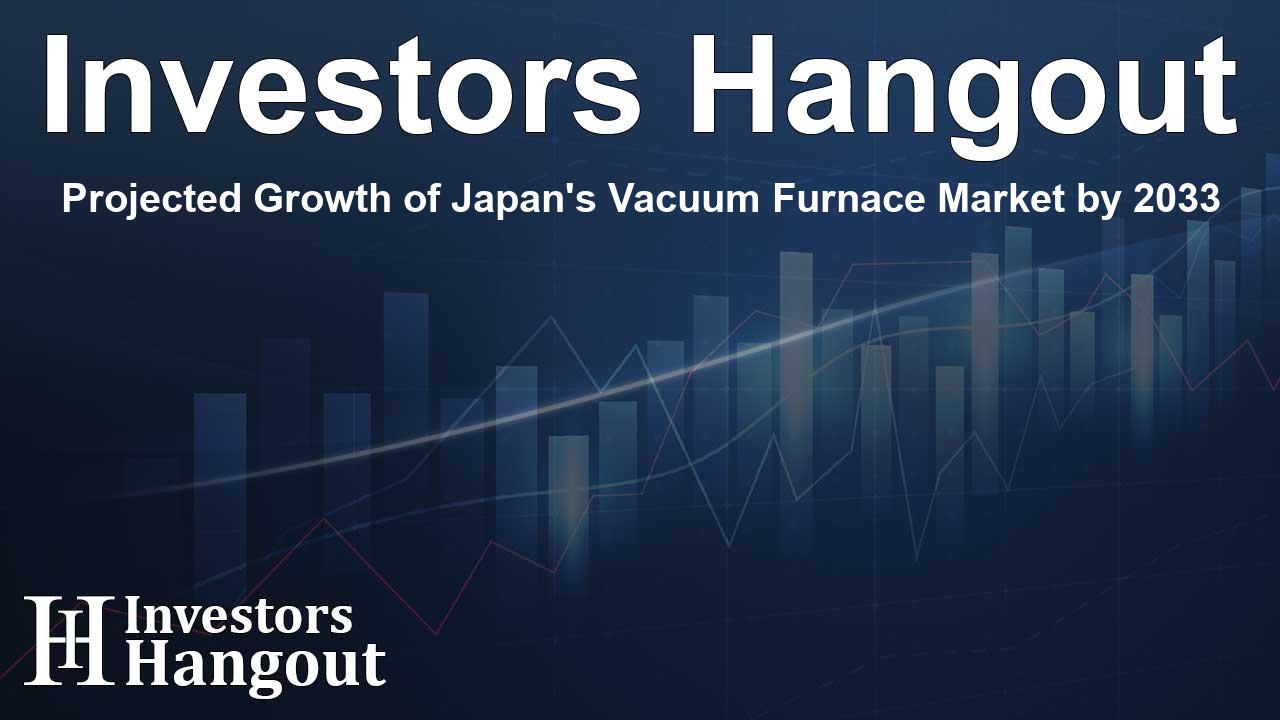Projected Growth of Japan's Vacuum Furnace Market by 2033

Overview of Japan's Vacuum Furnace Market
The Japan vacuum furnace market is expected to grow significantly, reaching a valuation of approximately US$ 334.89 million by the year 2033. This growth is projected at a compound annual growth rate (CAGR) of 6.54%, which highlights an emerging trend in industrial processing technologies. The demand for vacuum furnaces reflects the country's rich industrial landscape, particularly thriving within sectors such as automotive, aerospace, electronics, and medical devices.
Industrial Applications and Regional Distribution
Across various sectors, the application of vacuum furnaces is pivotal. In the automotive industry, around 1,200 vacuum furnaces are used for heat treatment processes critical for the performance of components like gears and camshafts. The aerospace sector, known for its stringent quality requirements, utilizes about 500 vacuum furnaces annually, focusing on essential processes like metallurgy and material treatments.
Impact on Electronics and Medical Devices
The electronics industry also plays a significant role in this market, employing approximately 800 vacuum furnaces for melting and casting intricate parts. In the medical device sector, around 300 furnaces are employed to meet precise sterilization standards. Additional sectors using vacuum furnace technology include the tool and die industry, which operates around 600 units, underscoring the widespread reliance on this technology across Japan.
Technological Developments and Maintenance Practices
Technological advancements mark an essential aspect of Japan's vacuum furnace operations. Modern facilities are increasingly adopting automation technologies, reducing labor needs while enhancing efficiency. Notably, AI implementation in furnace design has led to reductions in energy usage, helping companies save on operational costs.
Maintenance and Operational Efficiency
Maintenance practices are critical to ensuring operational stability. On average, O-rings must be replaced every 200 days to maintain optimal vacuum levels, while daily checks ensure that each furnace is functioning efficiently. This maintenance culture supports consistent uptime, ultimately leading to improved product quality across manufacturing processes.
Energy Consumption and Efficiency Trends
Energy consumption represents a focal point in the operational strategies of vacuum furnaces in Japan. For instance, medium-size furnaces typically consume about 28 kW of power, whereas larger setups can draw close to 50 kW. Innovative energy efficiency measures, including the use of inverters and automated processes, have emerged as vital components to reduce consumption per treatment cycle.
Key Market Drivers and Challenges
The growth of Japan's vacuum furnace market is driven by several key factors. The rising demand for high-precision materials in aerospace and automotive sectors emphasizes the necessity for effective heat treatment processes. Government initiatives aimed at promoting domestic manufacturing are generating further momentum.
Challenges Facing the Industry
However, the sector is not without challenges. High initial investment costs for advanced furnace systems and the complexity involved in upgrading existing technologies pose difficulties for manufacturers. Addressing these challenges while leveraging the drivers of market growth is essential for sustained industry advancement.
Major Players in the Market
In the Japan vacuum furnace market, several players dominate. IHI Corporation is notable for its extensive engineering capabilities and comprehensive product offerings tailored to precise heat treatment applications. They strategically position themselves in industrial hubs for maximum market access.
DOWA Thermotech's Market Presence
DOWA Thermotech Co., Ltd. is another key competitor, having established a strong foothold through their expertise in heat treatment technologies and a history of delivering thousands of vacuum furnaces. Their commitment to innovation and sustainability reinforces their market leadership as they adapt to industry trends.
Frequently Asked Questions
What is the projected value of the Japan vacuum furnace market by 2033?
The market is expected to reach approximately US$ 334.89 million.
What sectors utilize vacuum furnaces in Japan?
Key sectors include automotive, aerospace, electronics, and medical devices.
What technological advancements are shaping the market?
Automation and AI integration are leading trends that enhance efficiency and reduce costs.
How is energy consumption addressed in this market?
Energy efficiency measures, such as using inverters and automated operations, are implemented to reduce energy costs per cycle.
Who are the major players in the Japan vacuum furnace market?
Key players include IHI Corporation and DOWA Thermotech Co., Ltd., each holding significant market shares.
About The Author
Contact Hannah Lewis privately here. Or send an email with ATTN: Hannah Lewis as the subject to contact@investorshangout.com.
About Investors Hangout
Investors Hangout is a leading online stock forum for financial discussion and learning, offering a wide range of free tools and resources. It draws in traders of all levels, who exchange market knowledge, investigate trading tactics, and keep an eye on industry developments in real time. Featuring financial articles, stock message boards, quotes, charts, company profiles, and live news updates. Through cooperative learning and a wealth of informational resources, it helps users from novices creating their first portfolios to experts honing their techniques. Join Investors Hangout today: https://investorshangout.com/
The content of this article is based on factual, publicly available information and does not represent legal, financial, or investment advice. Investors Hangout does not offer financial advice, and the author is not a licensed financial advisor. Consult a qualified advisor before making any financial or investment decisions based on this article. This article should not be considered advice to purchase, sell, or hold any securities or other investments. If any of the material provided here is inaccurate, please contact us for corrections.
